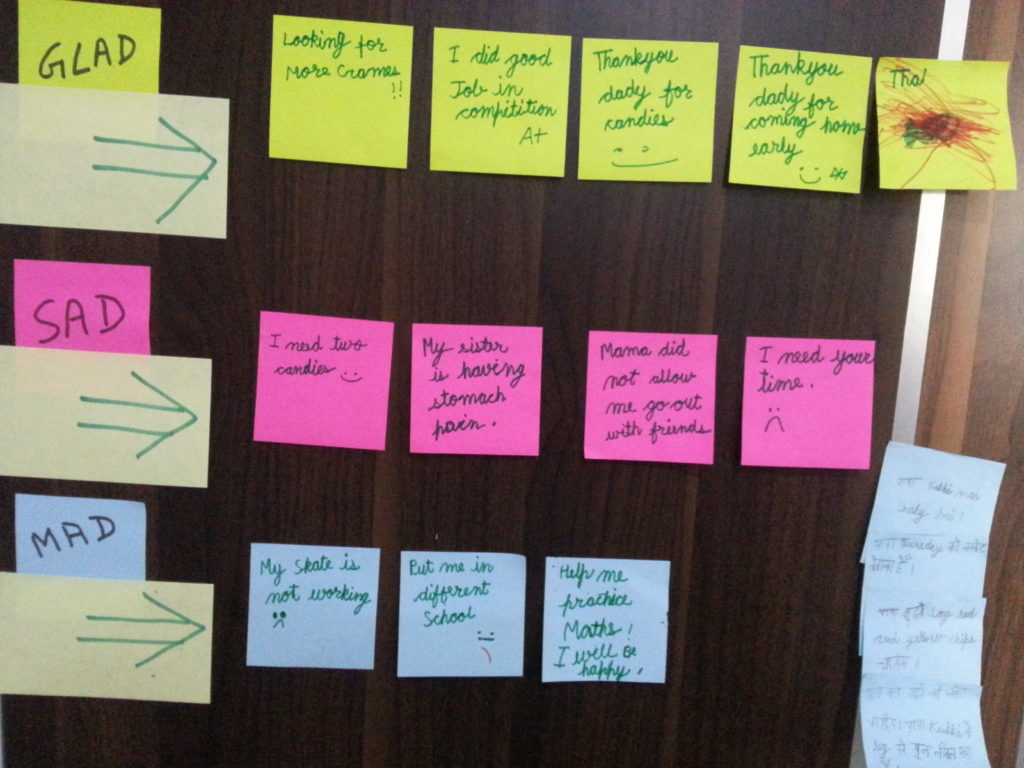by Durgesh Kumar Mishra
I am an agile coach by practice and visualize everything in an agile way, where happiness and culture are major ingredients. Happiness at work or at home is a win-win situation. Happy, engaged people are healthier, more productive; they have more ideas, are more likely to contribute over and above the responsibilities of their job and perform to the best of their ability. So, if your team or family is happy, you and others around them are more likely to be happy too.
Management 3.0 Practices in Parenting
Problem Statement: My kid got an assignment of reciting a memorized poem of around 18 lines with tough words in it. Per my observation he was very much lacking intrinsic motivation and some sort of fear with 18 lines of long poem that was expected to be delivered very next day in a school competition.
Initial Observations:
- He was very much lacking intrinsic motivation and happiness.
- If he is not happy, it impacts his performance as well as mine as it kills me to go to work, knowing that he’s unhappy.
- He was asked by his mom to complete it in an hour or two.
- Mom was acting in a command and control system, increasing pressure and fear.
- As he was not motivated and was not feeling interested, it was a bit difficult for him to learn the complete poem of 18 lines with actions in just one day.
Experiment:
So, my experiment was adapting the Management 3.0 Workout of Happiness Door for my Kids. As my day continually goes through the home-office-home cycle, I believe everyday should be a day of “Happy Mind” and that emanates through the happy faces of my family when I leave for the office (waving their hands with smiles.) It really bugs me when I found/realised during my experiment that, I spent very little time with my kids every day because of busy schedules, and they hardly get time to share their feedback or concerns with me. So, I tried to experiment with the Happiness Door a little differently and check how I can make my kids happy by listening to most of their feedback—positive or opportunities—no matter if it’s about school, personal, complaining, etc. The objective was for them to use the Happiness Door to do this in a form that I can try to help make them happier.
Learn more Practices such as Happiness Door at a Management 3.0 Workshop:



It really awesome.This shows that we have to a good manager at home first then we can implement the best practices at our work place.I am also working on similar experiment , will discuss it to make it more valuable.
I beleive this experiment at home will be equally effective at workplace and i firmly believe that happy people/team can acheive any impossible.
Happiness begets happiness !
Nice experiment with such a great principle and law .
This is nice article that cites management either at work or in life. The article fairly gives a picture of how we can identify the potential drivers for seeking valuable inputs in achieving our goals. Perhaps, the best take away is about setting up right goals is something that lead to create three way solution for Kid- Dad-Family. Similarly, such practices apply fairly well and would impact mapping between Employee -Employer-Organization. Great Stuff to read!
Thanks Raveesh !!
Thanks Sanchit !!
Very True !! Thanks for your input on this.
Thanks for your comment and looking for some experiments from your end. 🙂
Very nice article with a awesome example.Its shows best practices to implement the agile principle in anywhere.!!!!!!!!!!
Thank Ashutosh 🙂
Great experiment! I´m trying kudo cards with my family to improve mutual appreciation and happiness!